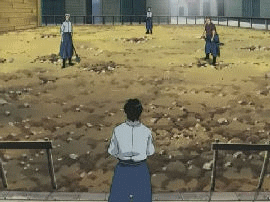

Rapid response and early eradication are important components of integrated management and knowledge of the environmental conditions that are conducive to the spread of these plants could be valuable in this endeavor. For instance, diffuse knapweed was reported to infest approximately 12,000 ha (30,000 ac) in 1989 ( Lacey 1989) and by 2005, over 56,000 ha (138,000 ac) were reported as infested in Colorado (Colorado Department of Agriculture 2005). They are also anecdotally blamed for fence damage, clogged waterways, and increased fire hazard due to accumulation of plants.ĭiffuse knapweed, kochia, and Russian thistle are widespread and are still spreading.

These weeds compete with desired vegetation ( Crompton and Bassett 1985 Watson and Renney 1974 Weatherspoon and Schweizer 1969) and might contribute to the spread of radioactive waste ( Warren 2001). A number of tumbleweeds including diffuse knapweed, kochia, and Russian thistle, among others, are considered noxious or invasive in much of western North America. Despite the widespread nature of this adaptation, little research on tumbling dispersal has been published. This dispersal mechanism has evolved in at least nine disparate plant families including Asteraceae, Amaranthaceae, Asphodelaceae, Brassicaceae, Boraginaceae, Chenopodiaceae, Fabaceae, Lamiaceae, and Poaceae ( Becker 1978 Heyligers 1999 Roché and Wilson 1999). The point at which the plant breaks is typically at or near the soil surface. The tumbleweed mechanism of dispersal is characterized when the entire above-ground portion of a senesced herbaceous plant breaks and rolls, dropping seed along the way in a wind-driven process. These estimates can be used in assessing the vulnerability of a site to rapid spread of these species. Therefore, they are probably overestimates, particularly later in the fall and into the winter and early spring, when fatigue might have greatly weakened stems. All of these estimates are weighted averages and none incorporate the fatigue effects of variable wind. Kochia stems under moderate soil moisture required 50 m/s (111 mph) winds to break, whereas stems under dry or very moist conditions required 29 m/s (65 mph) winds to break. There are also differences in stem strength among sites for diffuse knapweed, although sites were not compared for the other species. Diffuse knapweed stems under dry soil conditions broke under force equivalent to winds of 32 m/s (71 mph), whereas 16 m/s (38 mph) winds were sufficient on average to break plant stems under more moist soil conditions. Regardless of soil moisture, the wind velocity necessary to break Russian thistle stems was 27 m/s (61 mph) on average. We used wind tunnel measurements to convert force required to break plant stems (stem strength) to wind velocities. In contrast, kochia was much less likely to tumble under moderate (average) fall precipitation and Russian thistle was unaffected by soil moisture. Diffuse knapweed was much more likely to tumble when soil is moist. This work has shown that in Colorado, soil moisture after senescence can have a strong effect on the likelihood of tumbling dispersal, although the effect is not consistent among species. Though common, this mechanism of dispersal has received little attention from researchers. Tumbleweeds are a diverse group of often economically important weeds that share a dispersal mechanism.

SASKR, Salsola iberica (Sennen & Pau) Botch. CENDI kochia, Kochia scoparia (L.) Schrad. Nomenclature: Diffuse knapweed, Centaurea diffusa Lam. Wind velocities necessary to break diffuse knapweed stems ranged from 16 to 37 m/s (36 to 77 mph). A wind tunnel was used to develop a conversion factor between force and wind velocity. There was a strong difference in diffuse knapweed stem strength between field collection sites that corresponded to observed differences in proportion of plants tumbling. In contrast, diffuse knapweed plants under zero water treatment required four to six times greater force to break compared to plants under the moderate and high water treatments. Kochia, under moderate water treatment, required more than twice the force to break compared to plants under the zero and high water treatments. There were no differences in stem strength among three water treatments for Russian thistle. Bolting rosettes of these species were transplanted to pots and reared in a common garden to determine the affect of postsenescence water on stem strength. Although diffuse knapweed, kochia, and Russian thistle are important tumbleweeds of the western United States, environmental factors contributing to their dispersal are not well understood.


 0 kommentar(er)
0 kommentar(er)
